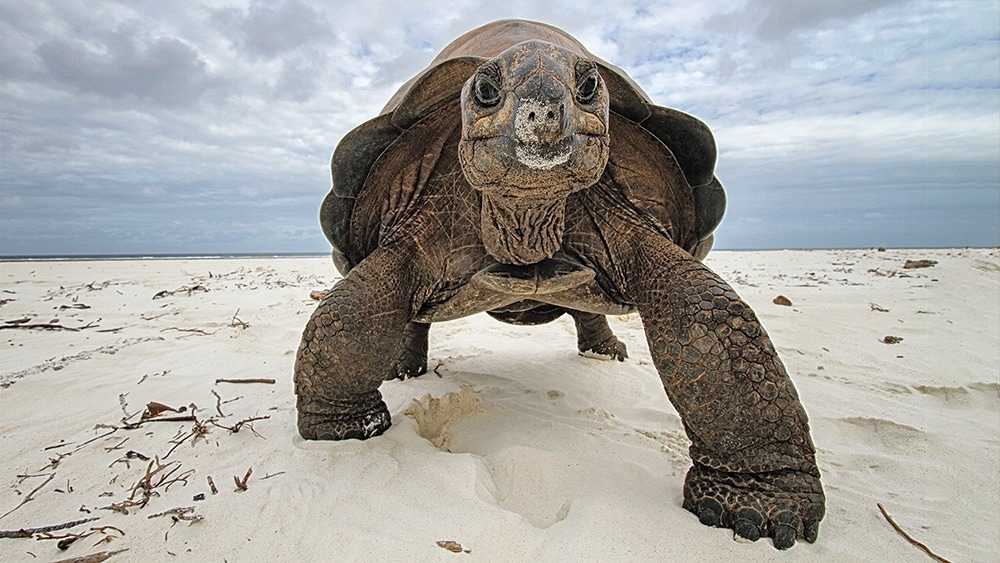According to the International Union for Conservation of Nature’s Red List, Aldabra giant tortoises are in danger of extinction, which means the species stands a high risk of extinction in the wild. The only wild animals can be found in the Aldabra Atoll in the Indian Ocean, northwest of Madagascar.
 The only surviving Aldabra giant tortoises in the wild can be found on the Aldabra Atoll, northwest of Madagascar. Image Credit: Dennis Hansen, Universität Zürich.
The only surviving Aldabra giant tortoises in the wild can be found on the Aldabra Atoll, northwest of Madagascar. Image Credit: Dennis Hansen, Universität Zürich.
Due to their importance in island ecosystems, they have been employed successfully in rewilding projects on several Western Indian Ocean islands where the endemic giant tortoise species have been extinct.
To put it another way, Aldabra giant tortoises serve as ecosystem engineers, restoring deteriorated island habitats. More tools and resources, particularly genetic information, are one of the most effective strategies to assure the long-term success of wild and rewilded populations.
Maintaining genetic diversity
Scientists from the University of Zurich have deciphered the genome of an Aldabra giant tortoise and assembled the species’ entire genetic code at the chromosome level. Individual Aldabra giant tortoise genetic differences can now be determined using this reference genome.
This genomic information is crucial in order for breeding programs in zoos to represent the genetic diversity found in the wild. We found that most of the genome is similar to other known genomes of turtles. This means our data will help the conservation efforts for other tortoise species across East Africa and Madagascar.”
Gözde Çilingir, Study First Author, University of Zurich
Furthermore, the data can also be employed for studying other tortoise species.
Reference genome from zoo animal
The reference genome comes from a female Aldabra giant tortoise (Hermania) at Zurich Zoo. The scientists were able to illustrate the practical relevance of reference genomes for species conservation by matching the reference genome to that of 30 tortoises dwelling on the Aldabra Atoll.
Researchers were able to identify not just the genetic variations between atoll groups, but also which population Hermania most likely originated from. The evolutionary biologists also discovered possibly lethal mutations that could harm the populations’ long-term health and should thus be observed.
New insights into exceptionally long lifespan
Upcoming research aimed at comprehending the genetic foundations of the species’ extraordinarily long longevity may benefit from the genome decoding work performed by UZH researchers. As the actual age of such long-lived animals is frequently unclear, the next step will be to investigate how DNA may be utilized to estimate an animal’s age.
Source:
Journal reference:
Çilingir, G., et al. (2022) Chromosome-level genome assembly for the Aldabra giant tortoise enables insights into the genetic health of a threatened population. GigaScience. doi.org/10.1093/gigascience/giac090.